When it comes to email marketing platforms for small businesses, two popular options are Mailster and AWeber. Both enable sending professional email campaigns to engage customers and drive conversions.
However, choosing the right software is crucial for success. The platform that best fits your business needs will save you time and maximize results. In this comprehensive comparison guide, we will evaluate Mailster vs AWeber across several key criteria to help you select your ideal email marketing provider.
We will look in-depth at market position, ease of use, customization options, features like blogging and e-commerce integrations, analytics, quality of customer support, and pricing models. By the end, you’ll have a clear understanding of how Mailster and AWeber compare and which solution matches your priorities and budget as a small business owner.
1. Understanding the Basics
Founded in 2010 by developers Gerald Unden and Aaron Allen, Mailster has emerged as a user-friendly yet full-featured email marketing platform.
Its focus centers around simplifying professional email campaigns and newsletter sending with an intuitive drag-and-drop builder while maximizing deliverability thanks to its proprietary Deliverability Guard technology.
Over 600,000 users create and send email newsletters powered by Mailster. The self-funded bootstrapped company has grown steadily through word of mouth rather than outside investment.
Today Mailster manages over 1 billion emails monthly on behalf of its customers across a range of industries like local services, e-commerce retailers, churches, universities, and non-profits.
In contrast, AWeber boasts a heritage as an early email marketing pioneer since 1998. Founder Tom Kulzer leveraged early exposure and success powering email for the Dave Matthews Band to build an industry leader over the past 20+ years.
AWeber has delivered over 5 trillion emails on behalf of its customers over the decades. Listed among the top 100 largest private SaaS companies by revenue, over 120,000 users tap AWeber to manage opt-in subscriber lists, and create and automate email campaigns.
While Mailster focuses primarily on the small business segment, AWeber supports a broader range of customers from solopreneurs up to major enterprises like The New York Times, Microsoft, and Forbes.
2. Features and Functionality
Automation
Mailster
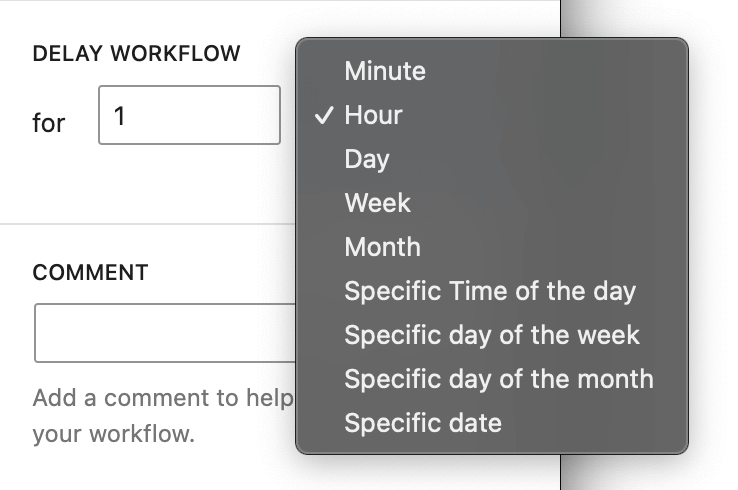
Mailster is a WordPress plugin that provides robust automation features to help streamline your email campaigns. It offers drag-and-drop creation of automated workflows with triggers based on subscriber actions or inaction.
You can set up welcome emails, abandoned cart reminders, re-engagement campaigns, RSS-to-email newsletters, and more.
With the visual workflow builder, you don’t need any coding expertise. Simply set conditional logic like “if subscriber signed up in last 7 days” or “if link clicked” to trigger actions.
Actions include sending specific emails, adding/removing tags, pausing sequences, and custom code snippets. Complex multi-branch sequences are easy to build.
Further automation includes automatic contact list segmentation by location, company size or industry, signed-up date, activity level, and other properties.
You can automatically move subscribers between lists when they meet the criteria you specify. For example, move highly engaged subscribers to a VIP group for exclusive offers.
Overall, Mailster strikes a great balance between automation power and ease of use. Novices can quickly build effective sequences while experts have robust options via code customizations. The visual workflow builder is far simpler than AWeber’s rules-based approach.
AWeber
AWeber also provides automation through its Follow-Up Emails and Broadcast Series features. You can create segmented lists and then set up triggered or scheduled email series targeted to each segment. Configure sending based on new subscriber signup, date last emailed, link clicks, date of last order, and more.
While easy to initially set up basic automation, executing more advanced sequences requires familiarity with using filter rules and tags in AWeber’s email builder and settings pages across subscriber lists, follow-up messages, and broadcasts. There is more complexity compared to Mailster’s visual workflow interface.
On the plus side, AWeber does enable time-based conditional logic. You can specify delays between emails in a series based on the number of hours, days, weeks, or months. Scheduling is also timezone-aware. So you can cater sending cadences to subscriber locations.
For hardcore email marketers, AWeber provides deep capabilities. But those less technically versed may find it overly complex compared to Mailster’s streamlined automation options.
Winner: Mailster
Mailster wins for its user-friendly visual automation builder. Novices can quickly create multi-branch conditional sequences while seeing the big-picture workflow. Mailster also makes it simpler to trigger actions based on subscriber behaviors.
Its balance of power and simplicity outpaces AWeber’s steeper learning curve for maximizing more complex automation scenarios.
Email Templates
Mailster
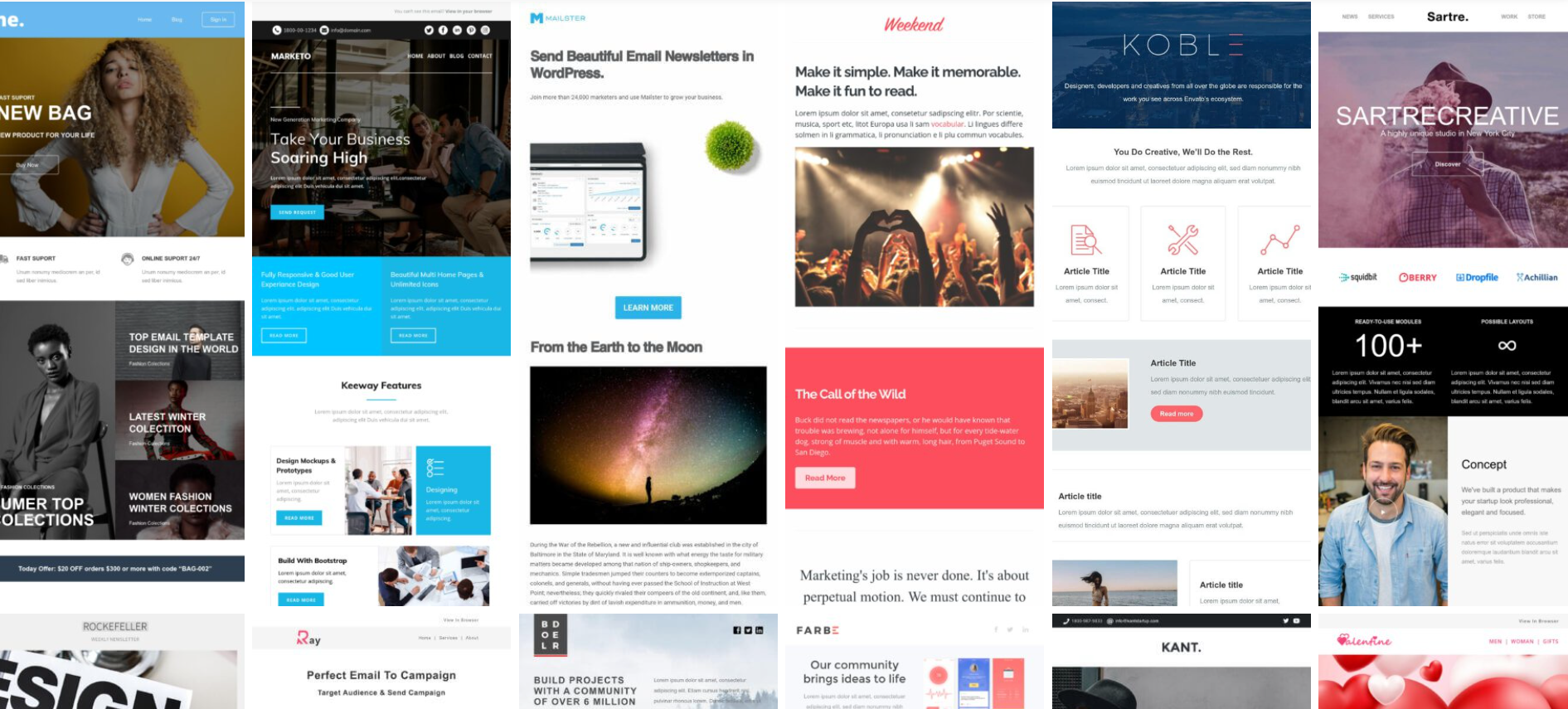
Mailster offers hundreds of professionally designed email templates to make campaign creation easy. WordPress users can browse by category like Welcome Series, Promotions, Holidays, and more to find templates matching your needs. Most incorporate responsive design so they display beautifully on any device.
The template editor makes customizing a breeze. Update colors, fonts, and images in just a few clicks with the what-you-see-is-what-you-get (WYSIWYG) editing interface.
Drag and drop new elements where desired and tweak text and styling with ease. Those comfortable with HTML/CSS coding can further fine-tune templates.
While templates cannot be exported or imported, Mailster does enable saving customized versions. This lets you reuse your tailored designs across future emails to ensure branding consistency.
With such variety and customization options, Mailster makes it simple for novices and experts alike to produce professional, polished email layouts showcasing your brand.
AWeber
AWeber also has pre-made email templates you can customize to your brand. Filter the template library by category, layout, campaign goal, and more to match options to your specific needs.
The drag-and-drop editor allows moving template elements around easily. Insert new text blocks, images, and buttons with just a few clicks. Modify colors, fonts, padding/margins, and more via sidebar styling options. Those adept at HTML and CSS can also tap into the code behind the WYSIWYG interface.
While not as visually polished as Mailster’s templates out of the box, AWeber makes up for it with greater customization capabilities in the hands of skilled users. Export/import options allow backing up and reusing tailored templates repeatedly.
For novices, the templates and editing features provide a solid foundation. But markup knowledge is needed to achieve truly premium, custom results. Mailster still retains an edge here with its library of pre-built visually impressive templates.
Winner: Tie
Both Mailster and AWeber offer ample quality templates and user-friendly editing interfaces empowering custom styling. Mailster shines with its visually stunning ready-made templates while AWeber excels in deep customization power for coders.
Ultimately, they both enable great-looking, branded emails so result in an even draw here. The ideal pick comes down to a user’s comfort with coding for maximal customization beyond out-of-box templates.
Segmentation
Mailster

Mailster enables the creation of highly targeted subscriber segments to send customized email campaigns.
From your WordPress dashboard, you can segment your list based on location, signed-up date, company, industry, engagement metrics, sales data, survey responses, and any custom field stored in profiles.
The visual segment builder makes it easy to define rules and groups without coding. Set conditions based on subscriber behaviors like email opens link clicks, dates of purchases, etc. Combining multiple criteria is simple for hyper-targeting.
Dynamic segments automatically update as subscribers meet defined criteria. Custom static segments must be manually maintained. Power users can leverage Mailster’s API and webhooks to build custom integrations with their data sources to feed segments for personalized messaging.
Mailster takes the complexity out of targeted email segmentation with its intuitive interface. Marketers can slice and dice their audiences into highly relevant groups for sending tailored content and offers.
AWeber
AWeber also provides extensive options for segmenting your subscriber lists. Use filters to target groups based on signup date, location, engagement metrics, purchase activity, survey data, and other properties. Create manual static segments or automated dynamic groups.
Building segments does require some learning of AWeber’s filters and tags terminology but ultimately enables the precise dividing of subscribers for customized email campaigns.
Integrate with services like Zapier to connect member data from apps like Salesforce into AWeber for expanded segmentation capabilities.
While powerful segmentation is possible, AWeber lacks the simplicity of Mailster’s visual segment builder. Marketers comfortable working within AWeber’s ecosystem will thrive. But those wanting an easy way to execute advanced targeting without coding skills may find Mailster more approachable.
Winner: Mailster
Mailster wins for the most user-friendly segmentation tools. Novice email marketers can easily create sophisticated, automated subscriber groups with Mailster’s visual segment builder. And the ability to export segments as CSVs makes execution simple.
While AWeber has expansive segmentation too, the email marketing software requires more technical comfort interacting with its database rules and filters. So Mailster’s balance of segmentation power and simplicity put it ahead.
Analytics
Mailster
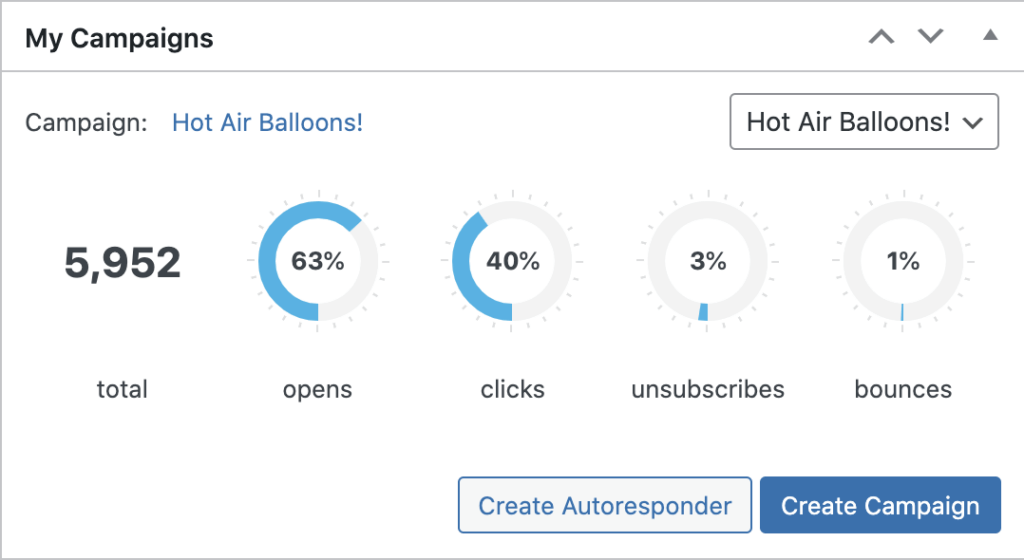
Mailster provides robust email analytics to help you refine campaigns and demonstrate ROI. Get a holistic view of opens, clicks, unsubscribes, spam complaints, and bounce rates across all campaigns from the main analytics dashboard. Drill down into reports on individual messages too.
See how subject lines, names, and send times impact open rates to optimize future delivery. Review click-through rates by link to adjust content. Identify and target inactive subscribers to reengage.
Mailster even makes the raw data available to download for further processing. Integrate Google Analytics to connect email performance with website visits, conversions, and sales.
With all this insight, tweaking email content, design, segmentation, timing and more becomes data-driven. Mailster analytics shine a light on what’s working across the subscriber lifecycle.
AWeber
AWeber also provides expansive email analytics across campaigns and subscriber engagement. The main dashboard displays top-line performance summaries. Dig deeper into reports segmented by campaign, message, list, links, and more.
Evaluate deliverability through bounce tracking. Find winning subject lines and send times. See who opens, clicks, shares, subscribes, and purchases. Identify churn risks based on email activity.
Data exports enable custom reporting builds. Integrate webinar software, landing pages, and other marketing systems via Zapier to connect performance with email initiatives.
For number-driven marketers, AWeber supplies no shortage of metrics intelligence to guide decisions on email content, segmentation, design, timing, automation, and beyond.
Winner: Tie
Both Mailster and AWeber offer deep analytics into subscriber engagement with email campaigns, making them evenly matched. Segmentation options allow drilling into metrics like open and click-through rates for demographic groups.
With integrations to other software like Google Analytics to track web traffic and other metrics, marketers gain visibility into the holistic impact of email across website traffic, leads, and revenue. Ultimately, the expansive yet user-friendly analytics provided by both Mailster and AWeber excel in driving data-informed email optimization.
Unique Features
Mailster
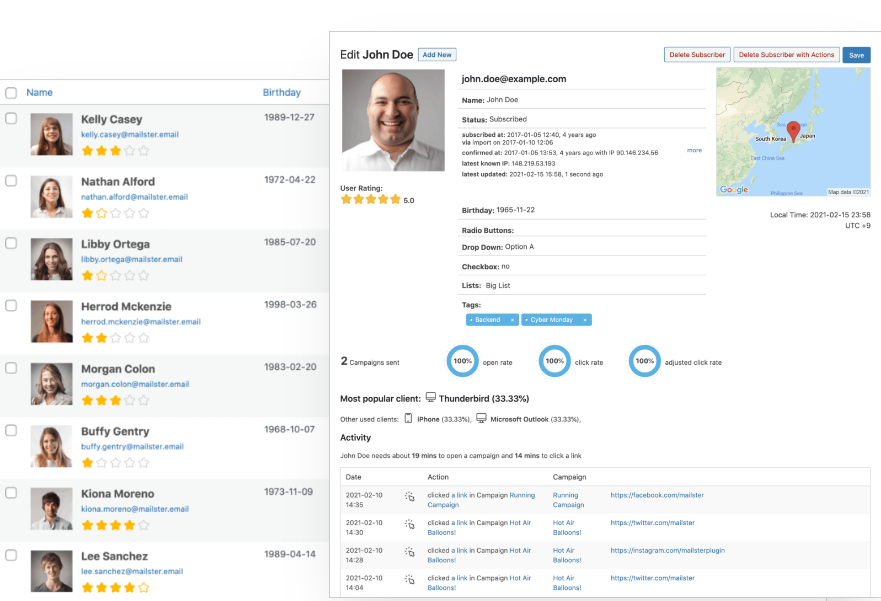
One unique aspect of Mailster is its focus on email deliverability. Its Deliverability Guard technology aims to maximize inbox placement and avoid spam folders. Methods include advanced IP management, inbox rendering tests, spam checks on content, and ISP monitoring.
Mailster also enables free sending to up to 1,500 subscribers on its lowest plan. Most competitors charge based solely on list size. This makes Mailster accommodating for bootstrapped startups looking to test email marketing.
On the design front, Mailster has partnered with iconic font foundry Monotype to integrate premium fonts into email templates. Using exquisite typography makes emails more visually compelling while supporting brand identity.
Other notable perks include free SMTP relay for using Mailster infrastructure to send transactional emails from your app or site. Mailster also provides WooCommerce and Shopify integrations for cart abandonment capabilities out of the box.
Ultimately, Mailster specializes in email by offering useful features that enhance deliverability, sender reputation, design, automation, and ease of use for cost-conscious customers.
AWeber
AWeber sets itself apart by enabling both email marketing and list building. It includes sign-up forms, landing pages, and popups to convert website visitors into subscribers. Capture leads to build targeted email lists for campaigns.
Advanced features like split testing email content and subject lines help further email optimization. Multivariate testing for signup forms boosts conversion rates. Dynamic text replacement lets you personalize messages with subscriber attributes at send-time.
For established online retailers, features like abandoned cart recovery can increase sales with targeted follow-up to site visitors who don’t purchase. Integration with webinar software allows capturing leads from online events.
As one of the first email marketing platforms since the 1990s, AWeber has had time to build out an extensive stacked feature set combining email, lead gen, and business automation capabilities.
Winner: Tie
Both Mailster and AWeber have unique advantages. Mailster specializes in email deliverability while keeping costs affordable. AWeber takes an integrated marketing and sales approach spanning email, landing pages, and business automation.
Ultimately both platforms offer distinct bonuses catering to specific user priorities like budget, deliverability, conversion optimization, and segmentation. So this one’s a draw.
3. Ease of Use
Mailster
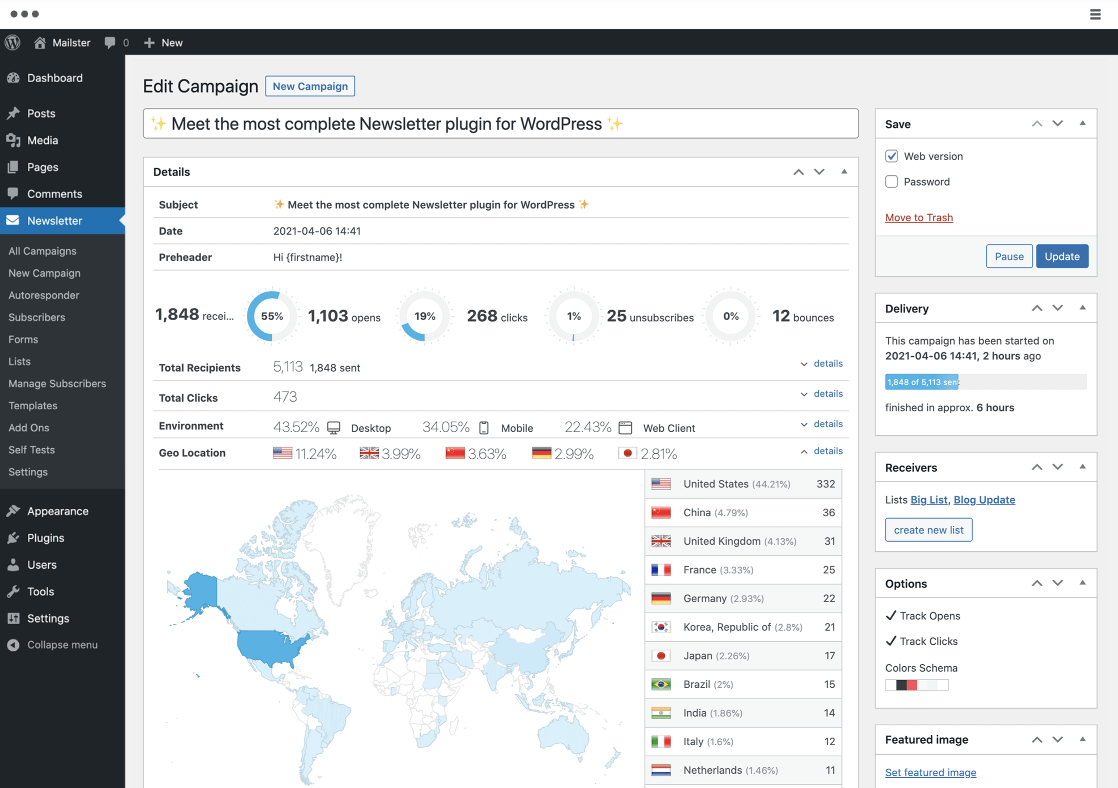
Mailster is a very user-friendly plugin that shines when it comes to usability. The interface is clean, modern, and intuitive. Icons indicate the purpose of each page and menu. Creating emails, automation, segments, and more is straightforward even for novices.
The drag-and-drop workflow and template builders allow the construction of complex campaigns visually without coding. Inline help tips explain features to smooth the learning curve. Mailster also offers live chat support and an active community forum to find answers when needed.
Importing contacts and building subscriber profiles is simple. The WYSIWYG editor empowers easy customization of professional templates for branding emails. Reports provide visibility into the performance without complexity.
Navigating Mailster soon becomes second nature even for first-time email marketers. The focus on usability means your team can create effective campaigns instead of fighting the platform.
AWeber
AWeber provides extensive capabilities which comes at the cost of increased interface complexity. The navigation menus can feel overwhelming at first. Moving between subscriber lists, creating sequences, segmenting contacts, viewing reports and more has a steeper learning curve.
While help documentation exists for each feature, the terminology around things like Follow-Up messages and Broadcasts adds an extra layer to internalize. Simply structuring an automated welcome series requires navigating multiple pages to configure properly.
On the positive side, the email builder, template customization tools, and basic subscriber list management do provide a friendly starting point for fundamentals. But scaling to more advanced functionality assumes a commitment to mastering AWeber’s approach.
The depth AWeber offers rewards those willing to invest in the ramp-up. Yet Mailster better streamlines core email tasks out of the box.
Winner: Mailster
With its modern interface, intuitive workflows, and focus on usability, Mailster handily wins for being the easiest email marketing platform to use for your email marketing campaigns.
The ability to create sophisticated campaigns like automated segment-targeted series with drag-and-drop simplicity gives Mailster the advantage. AWeber has greater depth but at the cost of increased complexity. For those wanting to minimize the learning curve, Mailster is the email service provider that delivers.
4. Email Deliverability
Mailster
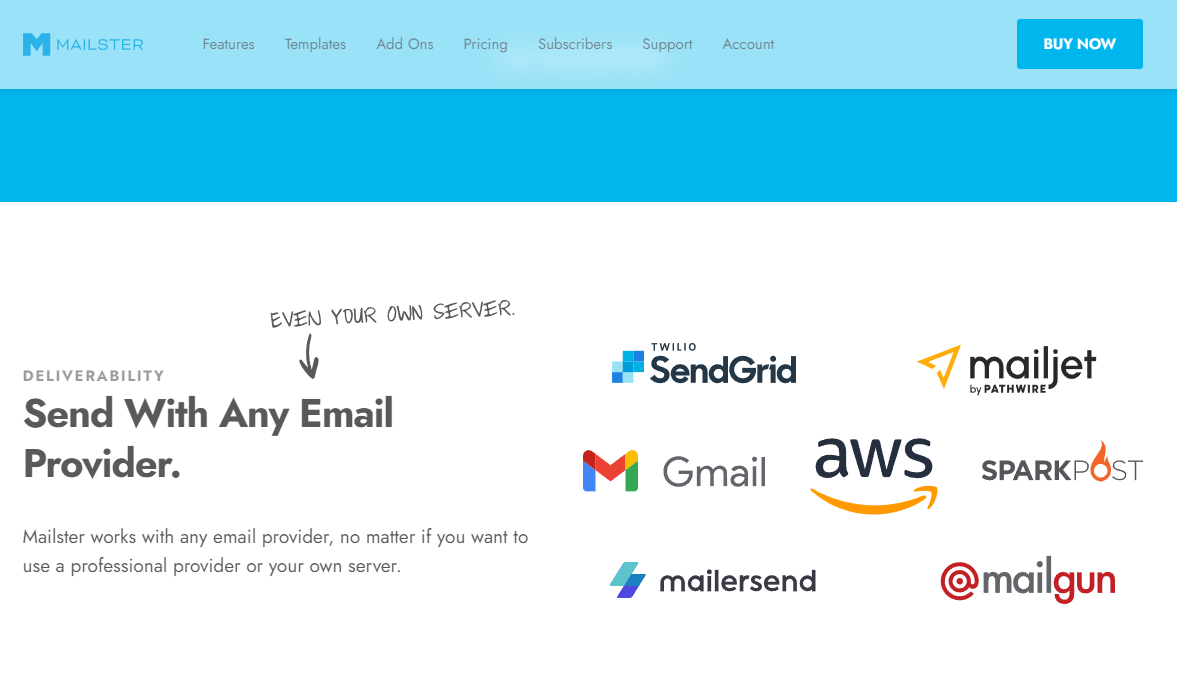
Email deliverability sits at the core of Mailster’s value proposition. Its Deliverability Guard technology aims to maximize inbox placement and avoid spam folders through advanced methods:
- Proprietary IP reputation monitoring detects issues proactively. Mailster shifts delivery between its managed, high-reputation IPs as needed.
- Inbox rendering tests email content across 50+ inbox providers. Identifies risky elements impacting render rates.
- Analyzes links, images, and content for factors triggering spam filters.
- Uses machine learning to optimize sending domain, volume, and timing for your location.
- Offers free Send Feedback Loop (FBL) processing to handle spam complaints.
Together this protects the sender score and ensures your emails reliably reach subscriber inboxes without being incorrectly flagged as spam.
Mailster also enables customizing FROM names per campaign to match sender to content for improved trust and engagement.
Deliverability Guard gives Mailster an edge in reliable email delivery.
AWeber
AWeber does provide tools to maximize deliverability yet needs to gain the extent of Mailster’s dedicated focus here.
Configure DKIM and SPF records to authenticate your sending domain which boosts inboxing rate and sender reputation over time. View spam complaints and blacklist status notifications. Customize FROM names based on the campaign or integrate actual reply-to addresses to inspire trust.
However, there is no discussion of proprietary inbox testing capability or IP optimization methods based on your location and sending volume. So visibility into potential deliverability limiters is more limited.
While AWeber checks the basics like authentication protocols, advanced inbox placement technologies powering Mailster are absent.
Winner: Mailster
With its robust SMTP server and Deliverability Guard technology providing multifaceted optimization for inbox placement, Mailster wins for email deliverability.
Proprietary testing and monitoring capabilities combined with machine learning for optimal sending domain, volume, and cadence based on your needs give Mailster the advantage for reliable inbox delivery.
While AWeber sets up foundational protocols like DKIM and SPF, Mailster goes further for premium email deliverability.
5. Customer Support and Community
Mailster
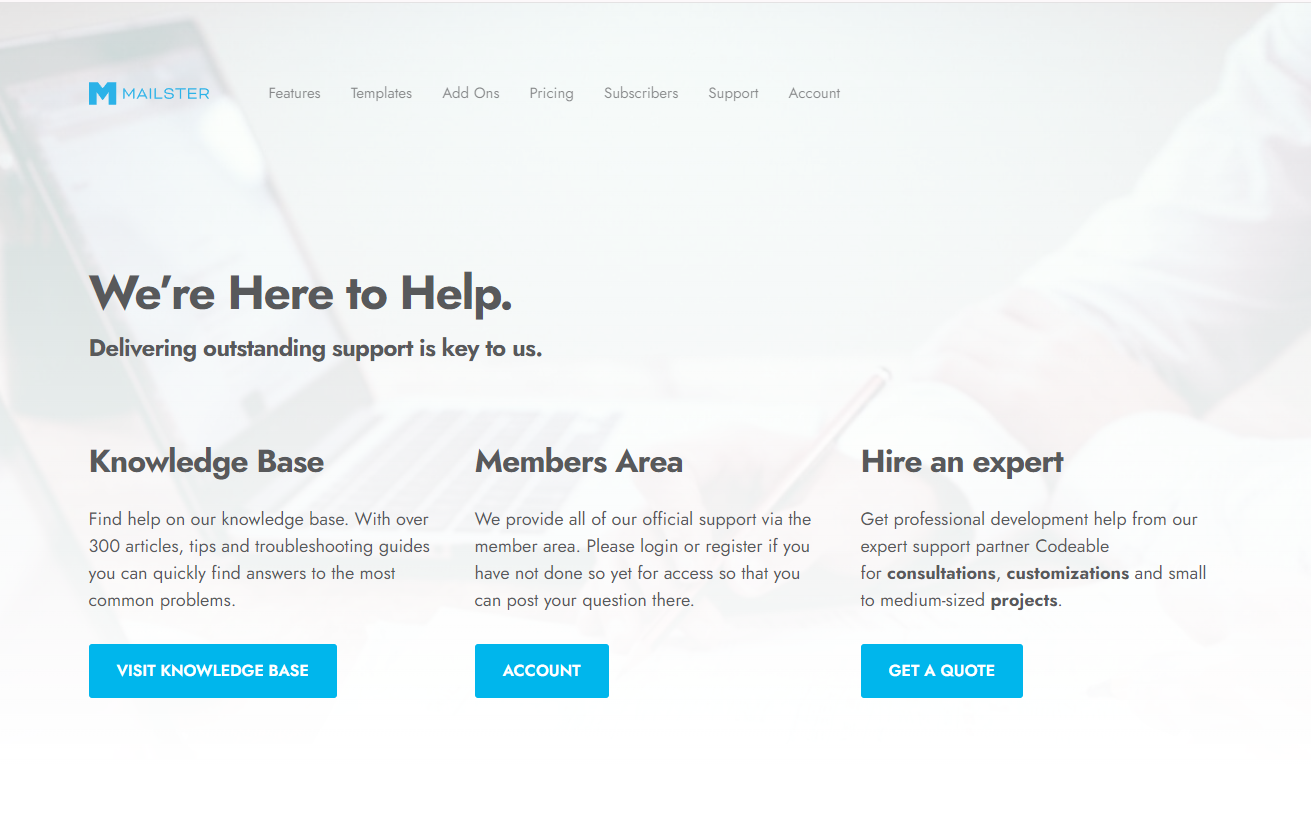
Mailster focuses heavily on customer support and community. Get assistance via live chat, email ticket, phone, Twitter, Facebook Messenger, and right from within the app.
The support team aims for the first response in under 30 minutes during business hours. From testing to troubleshooting, technicians can screen-share to resolve issues in real time. Documentation covers core features and workflows but live support fills any gaps.
An active user community exists on Mailster’s forum connecting over 17,000 members. Learn from peers, get product feedback to the dev team, and participate in shaping future roadmap priorities through ideas and voting.
Mailster also spotlights customer success via published interviews, case studies, and its Champions program. These initiatives provide inspiration, creative email campaign examples, and validation for the platform.
Between prompt live support, community forums, and customer content, Mailster has your back on each step of your email marketing journey.
AWeber
AWeber also provides phone, email, and chat support alongside extensive self-help options. Knowledge-based articles offer step-by-step instructions for executing core features like creating signup forms, scheduling broadcasts, and segmenting subscribers.
Chat technicians can answer quick questions or troubleshoot issues live. Submit tickets for problems requiring deeper investigation. Phone lines provide high-touch support during business hours should complexity arise.
User community resources are less visible on AWeber itself. Independent groups like the AWeber Users Facebook Group fill this gap. Learn from over 7,500 fellow customers and even receive direct assistance from AWeber representatives monitoring discussions.
While AWeber nails product documentation, Mailster has an edge when it comes to branded community cultivation, inspiration through customer stories, and real-time technical collaboration via screen sharing. But for self-service and off-hour inquiries, AWeber still delivers.
Winner: Mailster
Mailster pulls ahead with more cultivating customer community and higher-touch support capabilities like screen sharing and ambitious response time promises.
While AWeber provides breadth across self-help resources, email, chat, and phone channels, Mailster’s focus on branded community building, customer visibility, and ambitions live support SLA earns the win for going above and beyond.
6. Integrations
Mailster
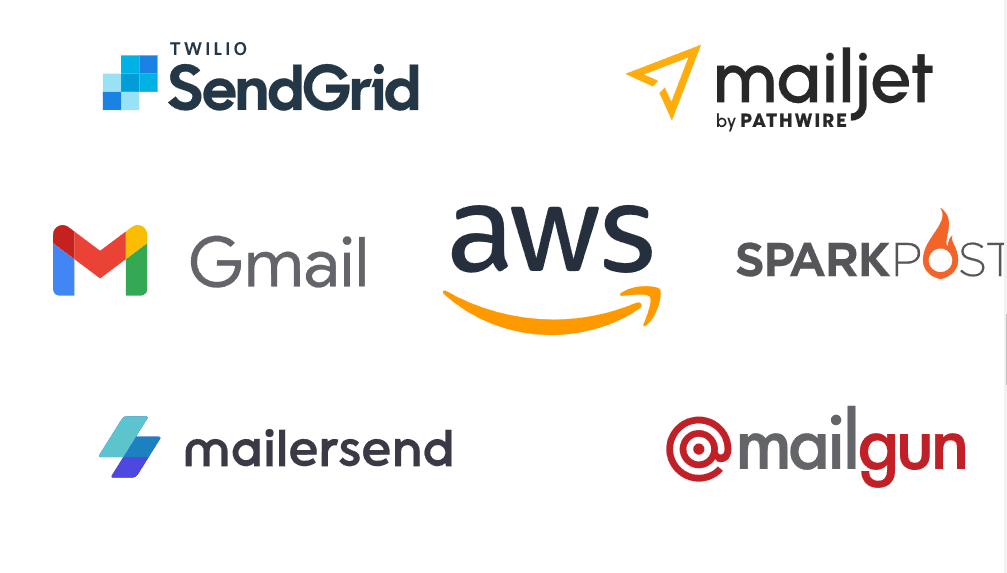
Mailster plays nice with other software thanks to its integration ecosystem. Import contacts from 150+ apps via native plugins and Zapier. Segment subscribers based on behaviors across tools like Stripe, PayPal, Google Analytics, and more by connecting webhooks into Mailster’s automation builder.
Out-of-the-box capabilities also exist for emailing customers based on actions in platforms like WooCommerce, Shopify, Magento, and others. Welcome new e-commerce buyers or recover abandoned carts without additional configuration.
Supported native app integrations include:
- Website Analytics: Google Analytics, Matamo, WordPress Stats
- E-commerce: WooCommerce, Shopify, Magento
- Marketing Automation: ActiveCampaign
- CRM and Support: HubSpot, Freshdesk, vTiger
- Forms: Gravity Forms, Contact Form 7, Ninja Forms
- Payment Platforms: Stripe, PayPal
- Web and Video Conferencing: Zoom
With 150+ total integrations via Zapier, no shortage of connecting Mailster to popular small business apps for enhanced customization and personalization.
AWeber
AWeber also provides broad integration capabilities with over 500 external apps via Zapier alongside select native integrations. Connection options allow the segmenting of AWeber subscriber lists based on behaviors tracked in other platforms.
Bring in contact and customer data from tools like Salesforce, HubSpot, ActiveCampaign, Eventbrite, and other CRMs, analytics software, membership sites, and more. Then trigger customized email workflows based on those insights with AWeber open API and Zaps.
E-commerce platforms like WooCommerce integrate order notifications and abandoned cart saves. Webinar software hooks up for capturing leads. Form plugins simplify embedding opt-in forms across websites.
While not quite as robust as Mailster in first-party integrations, AWeber delivers flexibility through automation and an extensive Zapier catalog.
Winner: Tie
Both Mailster and AWeber integrate with all the expected small business platforms for unlocking valuable customization, segmentation, and personalization of email campaigns tailored to occurrences in connected systems.
With 150+ and 500+ options respectively via native plugins and Zapier, picking a winner here is impossible – the expansive possibilities on both satisfy advanced needs. This one’s an even match.
7. Pricing
Mailster
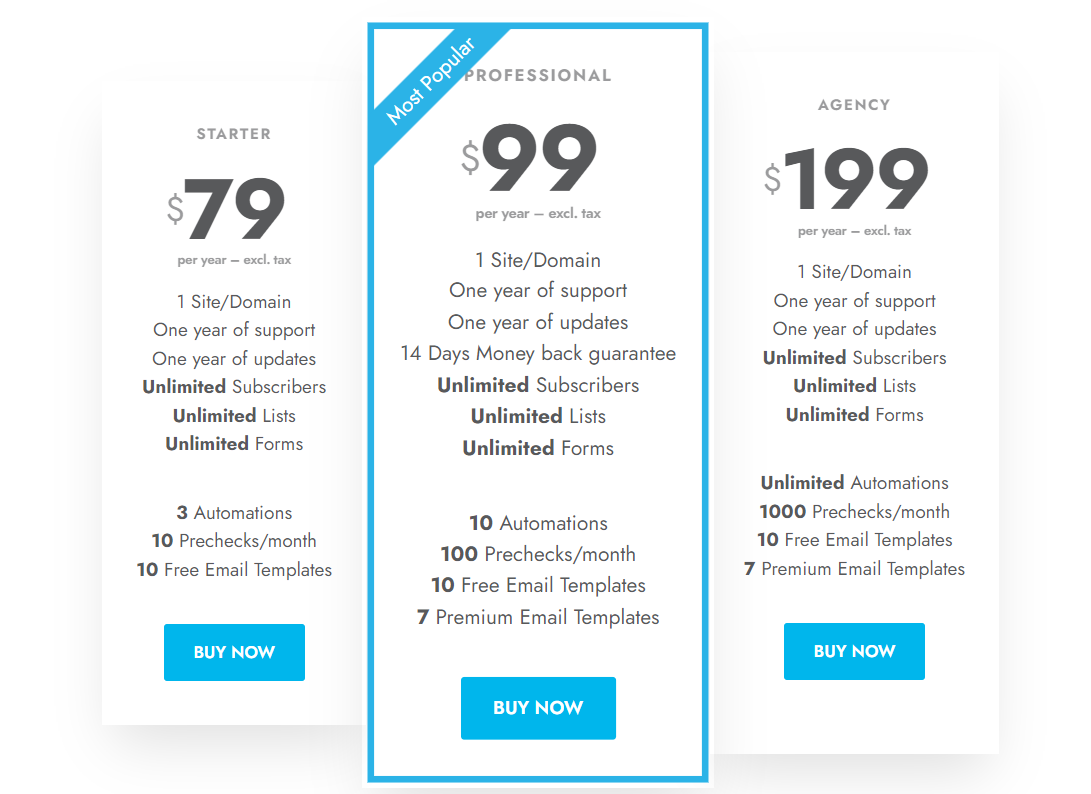
Mailster uses a flat fee model based primarily on the number of monthly emails sent. Plans start at $79 per year for unlimited subscribers and 15,000 emails.
The $99/year Professional plan handles 50,000 emails monthly. Number of subscribers is unlimited on all paid tiers.
Top-end Enterprise pricing scales up to send millions of emails via custom quotes. Each tier builds on features of previous ones adding more automations, signup forms, landing pages, advanced analytics, and priority support.
Overall, Mailster strikes an affordable balance, especially for bootstrapped entrepreneurs or those managing smaller lists. Flat fee predictability and sizable free tier make it budget-friendly.
AWeber
In contrast to Mailster’s flat rate approach, AWeber pricing is tiered primarily based on the number of subscribers on your list starting at $12.50/month when billed annually. Up to 500 subscribers fit the free level while unlimited contacts are supported in the Lite, Plus, and Unlimited plans.
Higher tiers build in more features like signup forms and landing pages, split testing, advanced analytics, and segmentation tools. But core email capabilities can be tapped even at starter pricing levels.
For those needing to maintain smaller audiences under 2,500 subscribers, AWeber delivers strong ROI especially when also leveraging its lead capture and conversion optimization capabilities. But costs scale up steeply above that compared to Mailster’s subscriber-agnostic flat fees.
Winner: Mailster
With friendlier pricing for smaller lists via predictable flat fees and more generous free offerings, Mailster pulls ahead as the most affordable full-featured email marketing platform.
AWeber makes sense managing lists under 2,500 yet costs balloon after that while Mailster sustains value predictably scaling into the highest email volumes. For budget-conscious users, Mailster delivers premium capabilities at prices beating AWeber.
8. Reviews and Reputation
Mailster
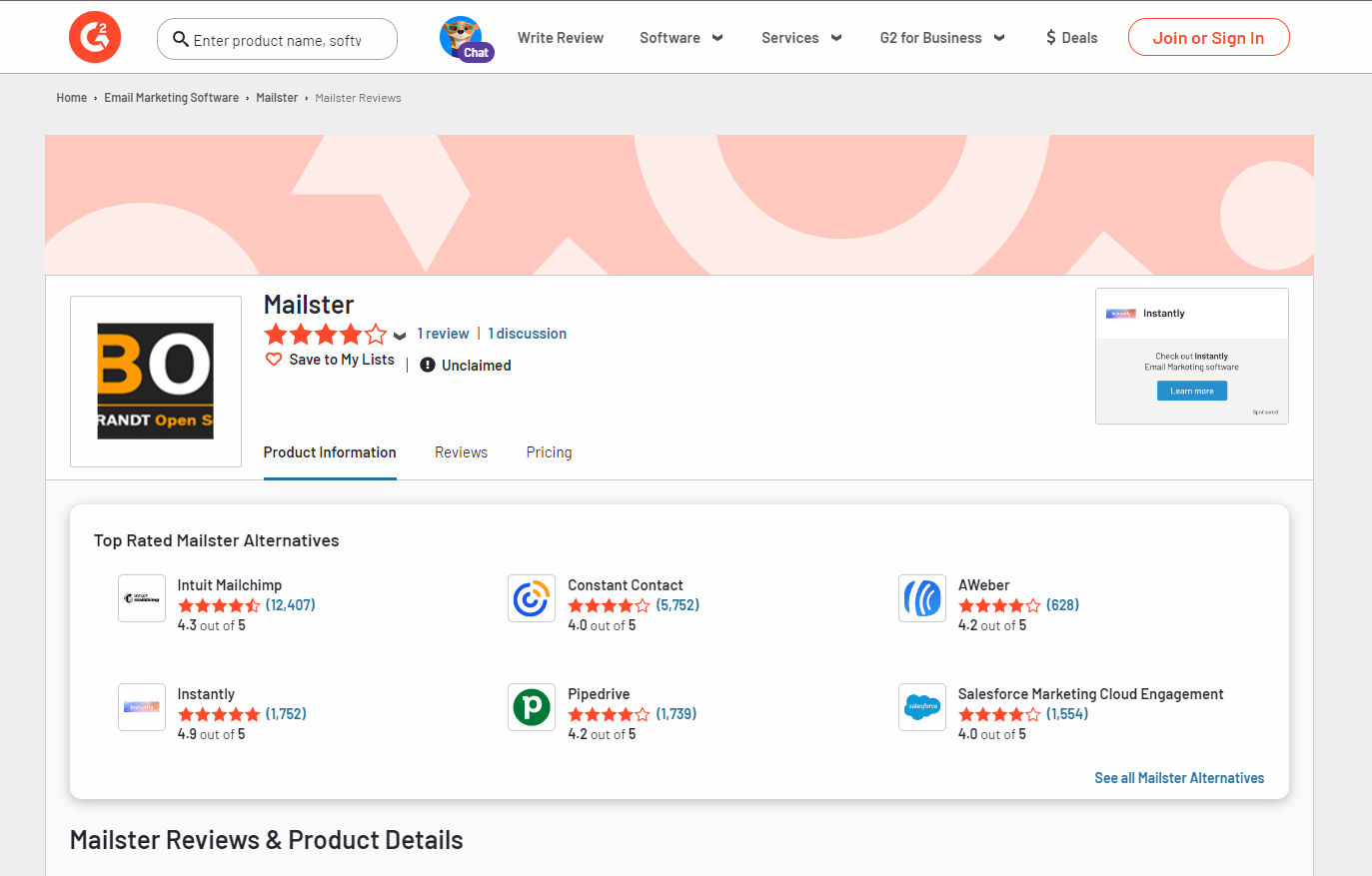
Mailster earns strong reviews from industry experts and users highlighting its balance of power and simplicity in email marketing.
Positive feedback centers on its easy-to-use drag-and-drop interface, polished templates, and automation features catering to both novices and advanced users. Reviewers consistently praise the deliverability technology for ensuring emails hit the primary inbox.
Users compliment the quality support team, responsiveness on the community forum, and steady enhancement of features based on customer requests and feedback. The affordable and transparent pricing receives kudos as well.
Constructive criticism focuses on limitations for importing/exporting campaigns between systems. Some enterprise-level needs around custom coding, IP management, and hyper-segmentation exceed current capabilities too.
But for typical small business email marketing needs, Mailster satisfies with a well-rounded, continually improving product loved by its customers.
AWeber
As an email marketing pioneer since 1998, AWeber enjoys strong brand recognition and loyalty from long-time customers. Users highlight reliability, deliverability, segmentation tools, and automation features as advantages.
Integrations, templates, and analytics capabilities also earn positive marks. Support satisfaction generally trends high thanks to different tiers based on account pricing.
Constructive feedback centers on the dated interface and complexity learning and managing more advanced workflows. Reviewers indicate needing strong determination to ramp up on terminology and navigation before unlocking full value.
Pricing also draws mixed opinions. Entry levels deliver decent bang for the buck yet costs scale steeply above 2,500 subscribers making the platform prohibitive for larger audiences.
But for established email marketers, AWeber’s depth continues to satisfy despite opportunities to modernize certain aspects of the user experience.
Winner: Mailster
With higher overall ratings and praise for usability plus deliverability and automation power suiting both new and advanced users, Mailster emerges as the winner for reviews and reputation.
While long-term customers indeed appreciate AWeber’s deep capabilities, more recent reviews indicating areas for modernization give Mailster the nod for its balance of user experience and email excellence.
9. FAQ’s
Mailster
- What types of email campaigns can I create in Mailster?
You can design welcome series, promotional emails, newsletters, abandoned cart reminders, reengagement campaigns, RSS auto-responders, and more. Leverage automation to trigger campaigns based on time or subscriber behaviors. - Does Mailster integrate with my e-commerce store or CRM?
Yes, Mailster offers native integrations with 150+ apps including WooCommerce, Shopify, Magento, ActiveCampaign, Zoho CRM, and HubSpot. Further connections are possible via Zapier. - How does Mailster help improve deliverability to the inbox?
Proprietary Deliverability Guard technology monitors reputation signals and runs inbox rendering tests to maximize email delivery and avoid spam folders. Advanced methods optimize sending domain, volume, content checks, and more specifically for your account. - Is there a limit to subscriber list size with Mailster?
No. All paid Mailster plans support unlimited contacts. Volume-based pricing applies only based on how many emails you need to send per month. - What happens after I exceed the free plan limits?
Once you surpass 1,500 subscribers or 15,000 monthly emails on the free plan, Mailster will ask you to upgrade to a paid tier with higher capacity aligned with your goals. You won’t lose any data or progress.
AWeber
- What email features are included in AWeber?
Major capabilities cover professional templates, drag and drop builder, advanced analytics, segmentation, split testing, automation via follow-up messages, and RSS-to-email. - Does AWeber offer landing pages and forms?
Yes. Convert website visitors into subscribers with signup forms, landing pages with lead magnet offers, overlays, and popups – all natively integrated with your lists. - What integrations and apps does AWeber support?
Choose from 500+ supported apps via Zapier including leading CRMs, e-commerce platforms, webinar software, membership sites, and more. API also enables custom integration. - How much does AWeber cost?
Pricing starts at $19/month for up to 500 subscribers. Unlimited pricing is available at $149/month with further discounts available for annual plans. View all pricing tiers. - What happens if my AWeber account exceeds subscriber limits?
If your subscribers outgrow your current pricing tier, AWeber will notify you to upgrade to the appropriate plan size to maintain the continuity of your account and campaign data.
Final Thoughts
Choose Mailster if…
Choose Mailster if you want a streamlined, affordable, and easy-to-use email marketing platform focused on deliverability to the inbox.
Its drag-and-drop editor, polished templates, and robust automation empower small business owners to create sophisticated campaigns and nurture customer relationships through email without complexity or high costs
Choose AWeber if…
Choose AWeber if you seek deep capabilities around subscriber segmentation, split testing, and data-driven optimization from an email marketing pioneer trusted since 1998.
The extensive feature set suits advanced power users who value acting insights from open and click-through rates to improve engagement continually.
Determining the right email marketing solution hinges on aligning capabilities to your business needs and budget.
Both Mailster and AWeber can deliver tremendous value – identifying whether simplicity and affordability or powerful segmentation and optimization matter more will lead you to the best choice to achieve your marketing goals through email.
Please ask any remaining questions in the comments section below and I’m happy to provide personalized guidance on which platform looks like the best fit based on your priorities!
